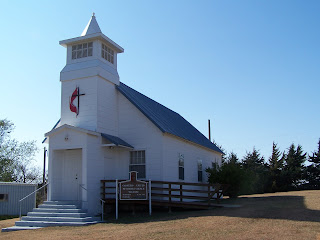French held a variety of jobs
outside the gas field. He came out
in 1928 to work wheat harvest
before returning to southeast
Kansas to graduate from high
school. In 1929, he returned to the
area for good.
French was in downtown
Hugoton the night City Marshal
Charlie Newman was fatally shot
by Fred McBee: McBee had a few
alcoholic drinks before the incident
in the Jewell Cafe owned by Bonnie
Parker and Clyde Barrow — known
locally as Blackie and Jewell
Underwood or Blackie and Jewell
Sutherland.
I was us close to the city marshal
as 1 am to you (within arm's reach)
when he got shot out here. He was
Charlie Newman. Fred McBee shot
him. They are both dead now.
I think that somebody had given
Fred a shot in this cafe. He just wa»
a little over inebriated up on Main
Street and was causing a problem
and .the city marshal was going to
take him to jail. It was '31 or '32,
right in there.
They (Bonnie and Clyde) left that
night.





















































